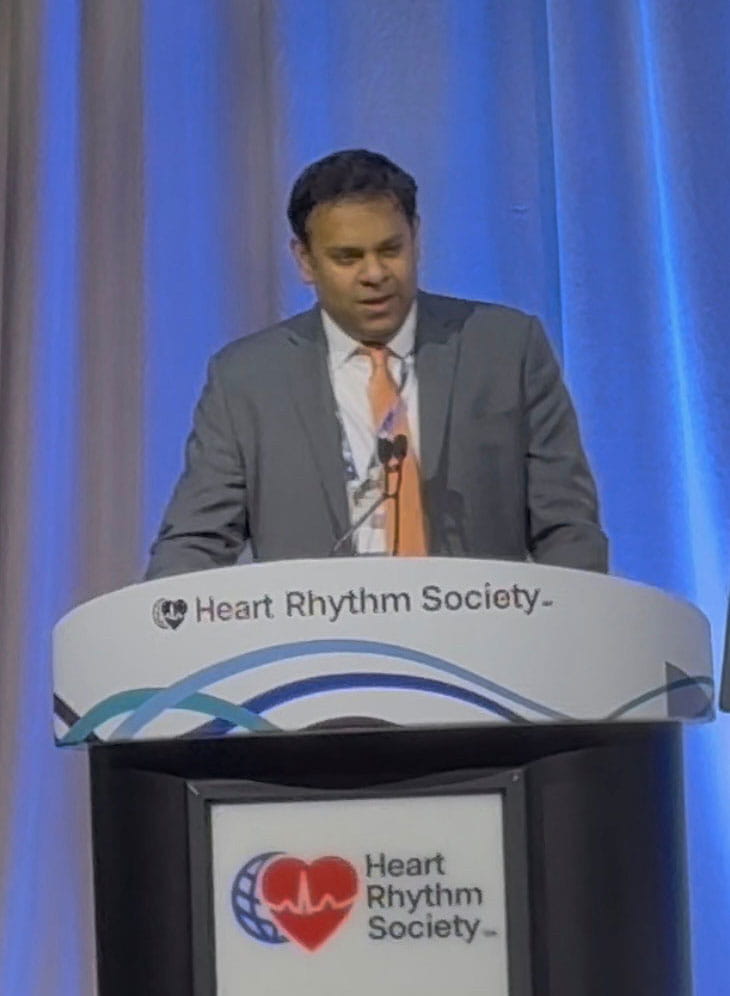University Hospitals-led Study Highlights Potential Role for GLP-1RA in Secondary Prevention of AF
May 12, 2025
Innovations in Cardiovascular Medicine & Surgery | May 2025
A new multicenter study led by University Hospitals (UH) Harrington Heart & Vascular Institute has found that GLP-1 receptor agonists may play an important role in the secondary prevention of atrial fibrillation (AF) in patients with obesity and type 2 diabetes.
 Varun Sundaram, MD, PhD, MSc
Varun Sundaram, MD, PhD, MSc
The TRANSFORM-AF study, presented at the Late Breaking Clinical Trials & Sciences Session at the Heart Rhythm Society and led by UH Harrington Heart & Vascular Institute principal investigator Varun Sundaram, MD, PhD, MSc, involved 2,510 patients with type 2 diabetes, a BMI over 30 and active AF. Active AF was defined by a recent hospitalization with primary diagnosis of AF, recent cardioversion or ablation for the AF, or consistent antiarrhythmic therapy in the year prior to starting treatment with a GLP-1 receptor agonist.
Results show that those patients with active AF who started taking a GLP-1 receptor agonist were at lower risk of AF-related events over several years, when compared with patients taking other medications for their diabetes.
These findings offer compelling evidence for cardiometabolic optimization with GLP-1 receptor agonist in AF management. Dr. Sundaram noted. “While conducting a randomized trial in this setting would pose ethical challenges—given the known benefits of GLP-1 RAs in obesity—it is increasingly clear that we should consider managing obesity…along with managing atrial fibrillation through ablations and drugs”, he told TCTMD.
Dr. Sundaram emphasized that for clinicians treating AF, GLP-1 RAs should now be strongly considered alongside conventional antiarrhythmic strategies, including ablation and pharmacologic therapy.


